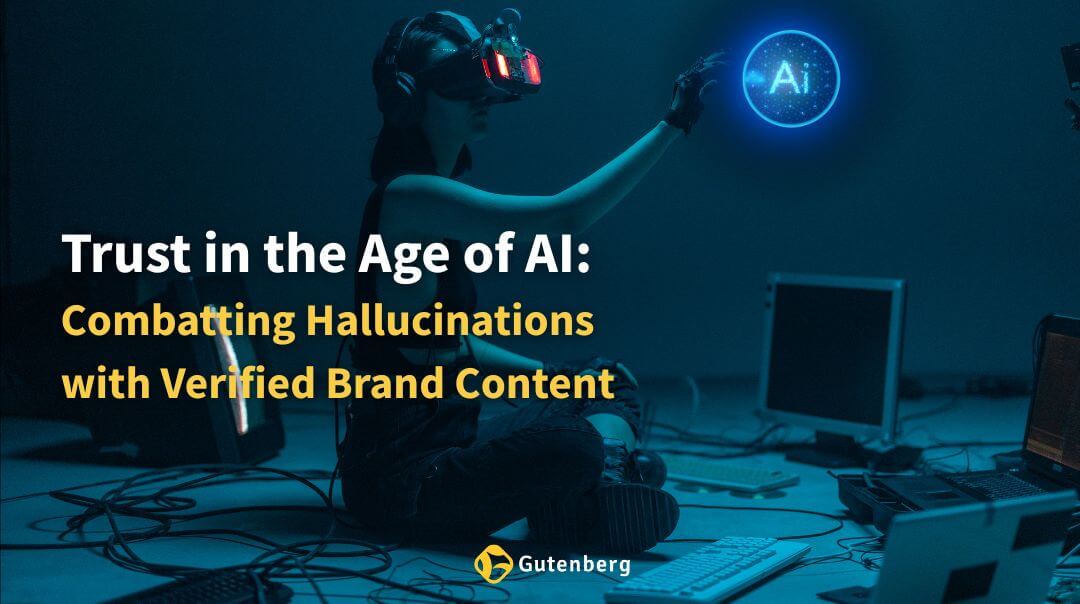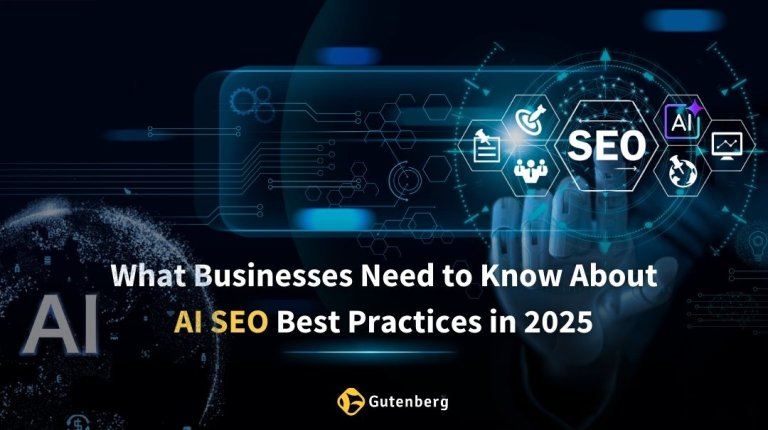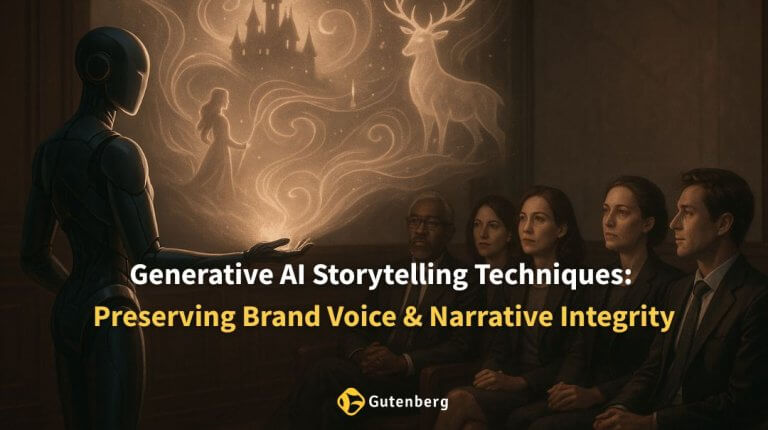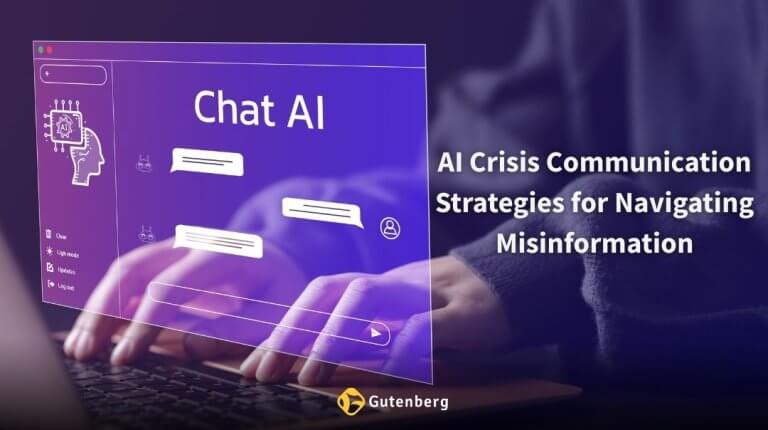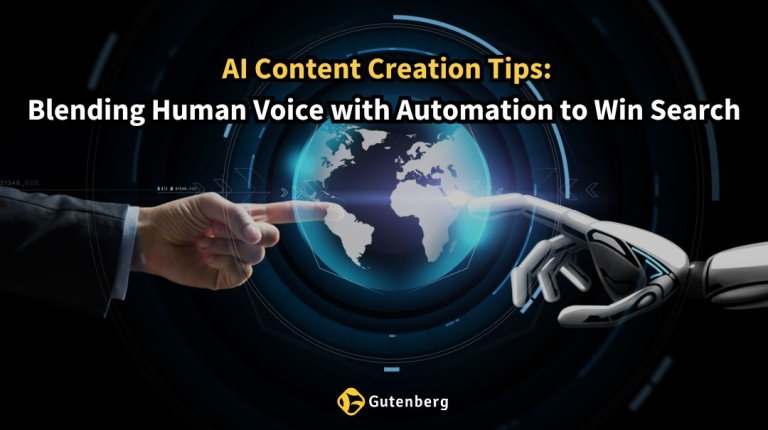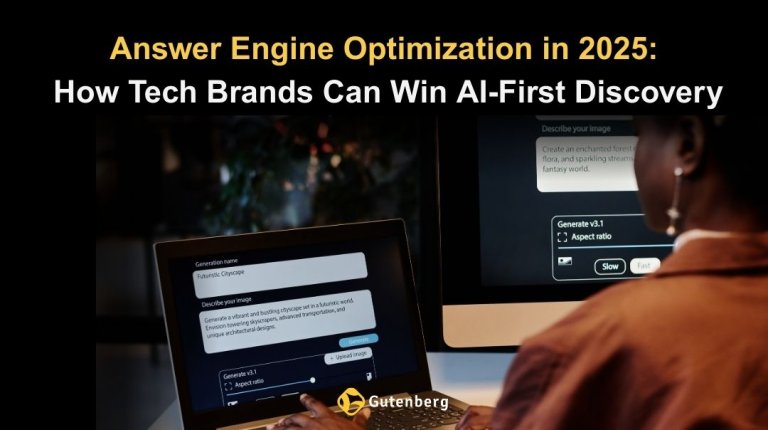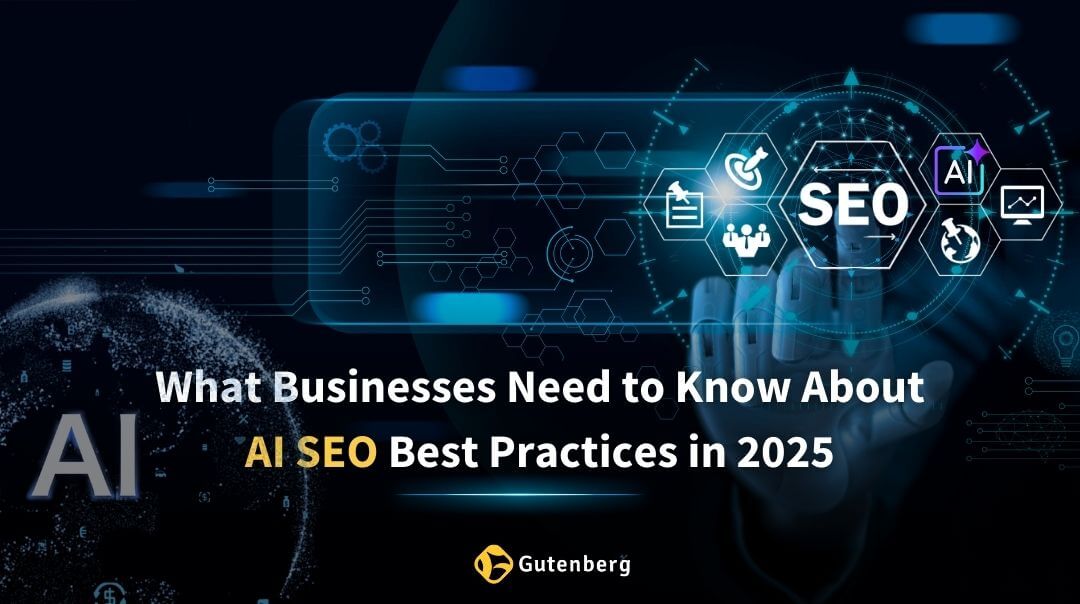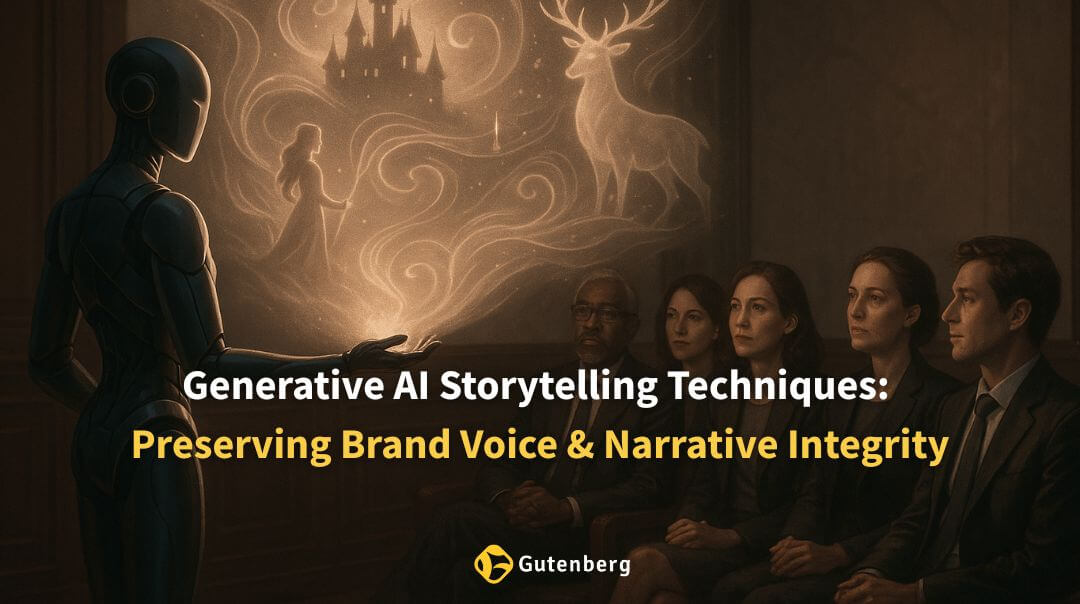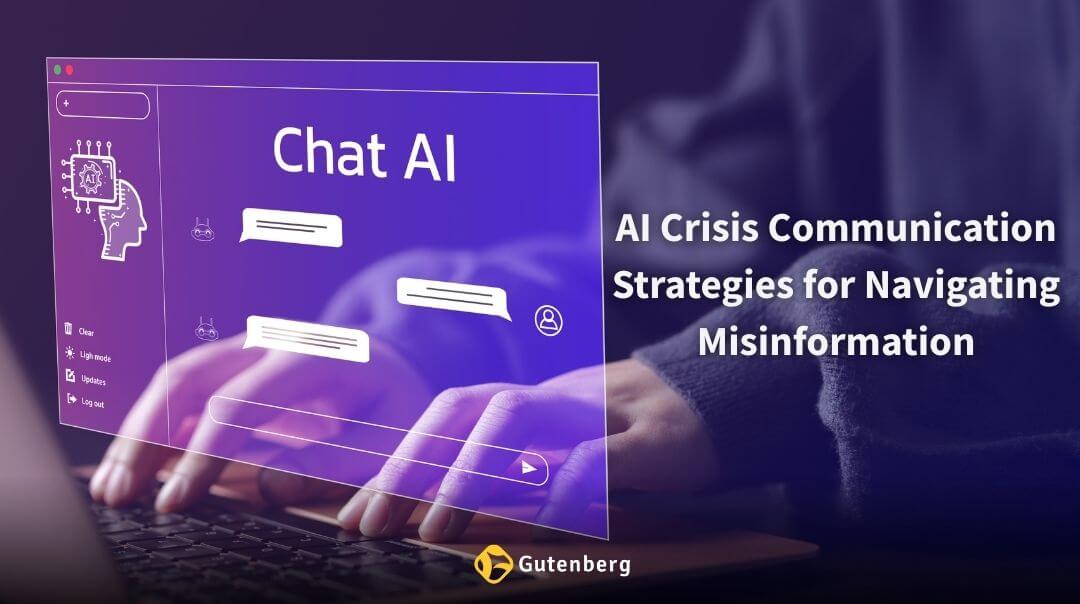In 2025, building trust in AI content is no longer optional. As AI-generated misinformation and ‘hallucinations’ rise, users demand greater transparency in content and accountability from brands. In fact, 84% of US users list hallucinations as their top AI worry. For brands, credible content creation and transparent brand communication have become the new foundations of user trust.
This blog explores:
- Why building trust in AI content is business-critical
- How transparency in content can backfire and what works
- Practical steps for credible content creation that boosts user trust
- Generative Engine Optimization (GEO) and SEO for trustworthy AI content
- How Gutenberg drives transparency and GEO results for clients
Foundations for Building Trust in AI Content Through Transparency
What Makes AI Content Credible Now
Brands can no longer take user trust for granted. The groundwork starts with transparent brand communication—honest disclosure of when and how AI helps produce content, paired with airtight source verification. Yet, transparency in content isn’t as simple as announcing “This was AI-generated.” In fact, recent research proves that disclosure alone can reduce trust by a significant margin.
Key Elements of Credible Content Creation
- Clear attributions and expert citations
- Consistent branding and voice across platforms
- Real-time fact-checking and correction workflows
Ensuring Transparency in Content to Bolster User Trust
Best Practices
- State AI’s role up front, but frame with purpose: “Machine-assisted, human-verified.”
- Embed sources for every significant claim.
- Fact-check using both human editors and automated tools.
- Maintain feedback loops—live correction functions and contact options.
Why User Trust Hinges on More Than Disclosures
People expect transparency in content, but trust only comes when disclosure is matched by demonstrated integrity—reliable sources, regular updates, and a willingness to correct errors. Brands should spotlight human editorial oversight and tie AI contributions to concrete, vetted data.
Combatting Hallucinations With Credible Content Creation
AI’s factual swings can create viral mistakes that kill reputation. Credible content creation is the frontline defense.
Strategies That Work:
- Use proprietary, first-party data wherever possible.
- Require all AI-driven drafts to be run through human-in-the-loop reviews.
- Prefer organization-owned sources over third-party datasets.
- Keep a permanent editorial log for every brand article or asset.
Table 1: The Cost of AI Hallucinations for User Trust
| Scenario | User Trust Outcome |
|---|---|
| AI error detected | Reputation and trust decline steeply |
| Transparent correction | Partial trust restoration |
| Human-reviewed sources | Consistent, sustained trust |
Generative Engine Optimization (GEO) & SEO: Trust as a Ranking Signal
With building trust in AI content now impacting both human audiences and AI search engines, brands must master GEO. Unlike classic SEO, GEO emphasizes being cited as a trusted source by AI (e.g., in ChatGPT, Google’s AI overviews, or voice assistants).
Best GEO Practices for Credible Content Creation
- Use structured data (schema, FAQ, microdata) to make content machine-readable
- Publish across forums, YouTube, Reddit, and industry journals—where AI “looks”
- Include short, quotable data statements with references
- Establish “hubs” of expertise: author bios, credentials, and clear sourcing on each page
Table 2: Classic SEO vs. GEO Trust Signals
| Trust Signal | Classic SEO | GEO/AI Discovery |
|---|---|---|
| Keyword density | High | Low |
| Data citations | Helpful | Essential |
| Brand mentions on 3rd-party sites | Nice to have | Critical |
| Structured data/schema | Important | Vital |
| FAQ schema | Useful | Highly Boosted |
Stat: 800% YoY rise in LLM/AI referral traffic in Q1–Q2 2025 proves the growing importance of AI-generated referrals over classic search.
Spotlight on Gutenberg: Champions of Transparent Brand Communication
At Gutenberg, our mission is building trust in AI content without compromise.
A Blueprint for Brands
- Unique messaging frameworks tailored for enterprise credibility
- Editorial transparency via always-on disclosure and citation flows
- Pro-active fact-checking and routine content audits
- GEO-first publishing strategies for region-specific discovery
- Regular monitoring of brand mentions both in traditional SERPs and AI-generated summaries
We empower organizations to turn transparency in content into a reputational asset—not a liability—driving measurable business results through credible content creation and authority.
Ready to anchor your brand in a landscape shaken by AI skepticism? Gutenberg delivers the workflows, editorial toolkit, and visibility strategies that protect and grow user trust across platforms.
Practical Takeaways: Ensuring User Trust and Credibility in Every AI Output
Checklist for Brands
- Make all AI use transparent and easy to spot by end users
- Back every key claim with sourced, clickable data
- Require human editors to approve all high-stakes AI drafts
- Build structured data into every post and page
- Regularly audit both factual accuracy and brand voice
- Track referrals from AI engines and optimize for emerging questions
- Stand up a central repository of proprietary data for AI referencing
Conclusion: Your Next Steps to Building Trust in AI Content
- Use only organization-verified, cited data as your source-of-truth
- Pair every AI-generated asset with clear disclosure and feedback options
- Monitor where and how your brand appears in AI-driven search and summaries
The future of content belongs to brands that make credible content creation, transparent brand communication, and user trust not slogans, but standard operating procedure.
Gutenberg stands ready to guide your brand through the maze of AI content skepticism to a foundation of transparent, verified, and truly trusted authority.
Frequently Asked Questions
1. Why is building trust in AI content important for brands in 2025?
Building trust in AI content is key to credibility. With misinformation and AI “hallucinations” on the rise, credible content creation helps brands maintain authority, protect reputation, and sustain user trust through transparent communication.
2. What does transparent brand communication look like in AI-generated content?
Transparent brand communication means clearly disclosing how AI was used, citing reliable sources, and showing human oversight in the process. This level of openness signals responsibility and strengthens audience confidence.
3. How can companies achieve credible content creation when using AI?
Credible content creation combines machine efficiency with human fact-checking. Many brands work with partners like Gutenberg to set up editorial workflows and data verification systems that protect user trust.
4. Does transparency in content always increase trust?
Not always. Research shows that simple disclosure of AI use can sometimes reduce trust if not paired with credible data and editorial oversight. Transparency in content must be backed by consistent accuracy and integrity.
5. How does user trust impact content performance in AI-driven search?
User trust acts as a ranking signal in both traditional SEO and Generative Engine Optimization (GEO). AI tools and search engines favor brands seen as reliable sources, making trust central to visibility and engagement.
6. How can brands protect against AI hallucinations damaging their credibility?
Brands can mitigate risks by maintaining strict editorial review processes, citing proprietary data, and keeping correction mechanisms in place. Agencies like Gutenberg provide structured credible content creation practices that reduce exposure to errors.
7. What practical steps improve transparency in content while boosting SEO?
Brands should embed citations, apply structured data, publish FAQs, and ensure every claim is verifiable. Teams that collaborate with experts such as Gutenberg often see stronger GEO visibility while reinforcing user trust.
8. How does Generative Engine Optimization (GEO) support building trust in AI content?
GEO prioritizes trustworthy sources in AI-driven discovery. Brands that emphasize credible content creation, fact-checking, and transparent brand communication are more likely to be cited by AI tools, strengthening user trust and visibility.

